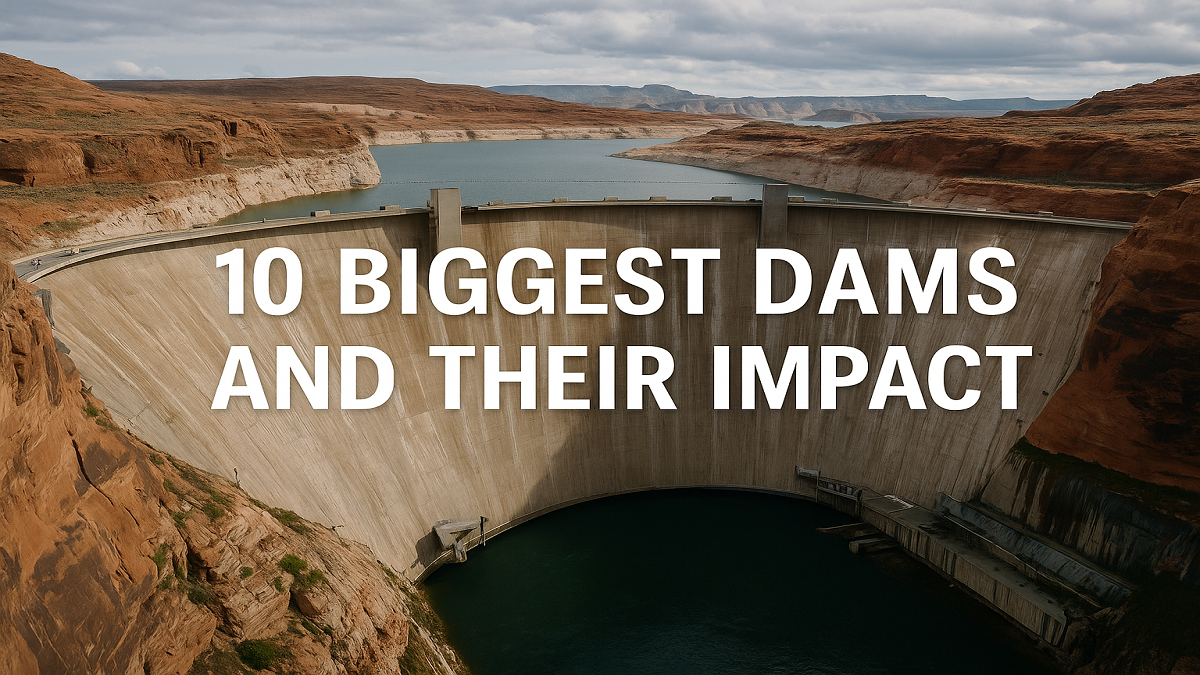Dams are among the most significant human-engineered structures, playing a vital role in hydroelectric power generation, irrigation, flood control, and water storage. Some of the world’s biggest dams, both by height and reservoir capacity, are feats of engineering innovation and resource management. However, these colossal structures also have complex implications for local ecosystems, communities, and climate systems. This article explores the 10 biggest dams in the world and the profound impact they exert on their surroundings.
Understanding What Makes a Dam “Big”
The size of a dam can be measured by various parameters including its height, length, reservoir capacity, and installed power capacity. This article considers a combination of these metrics to define the biggest dams globally, highlighting those with both engineering scale and socioeconomic influence.
Top 10 Biggest Dams and Their Global Significance
| Rank | Dam Name | Country | Type | Height / Capacity | Major Impact |
|---|---|---|---|---|---|
| 1 | Three Gorges Dam | China | Gravity, Hydroelectric | 22,500 MW, 181 m height | World’s largest hydroelectric power plant; significant for flood control and power supply in China |
| 2 | Itaipu Dam | Brazil / Paraguay | Hydroelectric, Concrete | 14,000 MW, 196 m height | Supplies over 70% of Paraguay’s electricity; strong cross-border cooperation model |
| 3 | Xiluodu Dam | China | Arch dam | 13,860 MW, 285.5 m height | Major contributor to China’s renewable energy grid; helps reduce coal dependency |
| 4 | Guri Dam | Venezuela | Gravity, Hydroelectric | 10,235 MW, 162 m height | Central to Venezuela’s electricity supply; economic and energy lifeline |
| 5 | Belo Monte Dam | Brazil | Run-of-the-river | 11,233 MW, 90 m height | Controversial for deforestation impact; large-scale national project |
| 6 | Grand Coulee Dam | United States | Gravity, Concrete | 6,809 MW, 168 m height | Crucial for irrigation in the western U.S.; major source of clean power |
| 7 | Sayano-Shushenskaya Dam | Russia | Arch-gravity dam | 6,400 MW, 242 m height | Largest power plant in Russia; suffered a major disaster in 2009 |
| 8 | Longtan Dam | China | Gravity dam | 6,426 MW, 216.5 m height | Significant for regional development and hydro stability |
| 9 | Kashiwazaki-Kariwa Dam | Japan | Pumped-storage dam | 8,212 MW (hydroelectric base) | Important for stabilizing Japan’s electric grid amid nuclear shutdowns |
| 10 | Tehri Dam | India | Rock-fill, Earth-core | 1,000 MW, 260.5 m height | Tallest dam in India; provides water, hydroelectricity, and flood protection |
Environmental and Social Impact of Large Dams
While these dams are engineering marvels, their construction often leads to submergence of villages, relocation of populations, and significant ecological disruptions. The Three Gorges Dam, for instance, displaced over a million people and submerged numerous cultural heritage sites. Deforestation, as seen in the Belo Monte Dam project, is a major concern in tropical regions like the Amazon.
In addition, large reservoirs can lead to increased greenhouse gas emissions from submerged vegetation and contribute to seismic risks due to reservoir-induced earthquakes.
Economic Benefits and Hydropower Generation
From an economic standpoint, these dams are cornerstones of national energy policies. They ensure energy security, stabilize electric grids, and support agricultural irrigation systems. For instance, Itaipu Dam has turned Paraguay into one of the leading renewable energy exporters. In India, the Tehri Dam contributes to the power supply for millions while safeguarding the plains from flood devastation.
Moreover, hydroelectric dams produce clean energy, reducing dependency on fossil fuels and contributing to sustainable development goals in many countries.
The Future of Mega Dams
The future of dam construction will likely focus on sustainability, efficiency, and minimal environmental disruption. Advances in dam engineering and better integration with environmental assessment practices can allow future dams to serve humanity with fewer drawbacks. Innovations such as fish-friendly turbines, improved resettlement policies, and real-time ecosystem monitoring are reshaping how dams are planned and built.



 Bhartiya Bhasha Utsav 2025: Celebrating ...
Bhartiya Bhasha Utsav 2025: Celebrating ...
 Starlink Internet: Revolutionising Globa...
Starlink Internet: Revolutionising Globa...
 Google 2025: Top Searches by Indian User...
Google 2025: Top Searches by Indian User...







